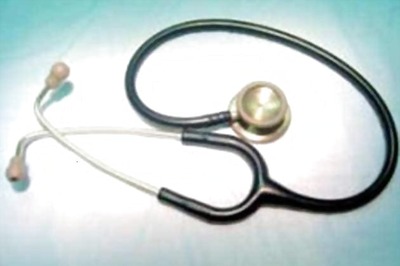
views
Why is green fluid leaking from my car?
The coolant is leaking from your radiator, water pump, or hoses. The coolant, or antifreeze, in your vehicle’s radiator helps keep your engine cool while it’s running. If parts of your radiator, water pump, or any hoses connecting them get old or damaged, then bright green liquid may drip under your vehicle or inside your engine bay. Leak location: Coolant leaks are usually near the front of your vehicle underneath the engine or the radiator. If your vehicle has rear heating control, the leak may appear under the center of your vehicle. Other symptoms: A sweet-smelling aroma near your vehicle, high engine temperatures or overheating, and a hissing sound after you turn off the engine Newer coolants may also be bright yellow, pink, blue, or orange depending on the manufacturer. If you’re unsure what color your vehicle has, check the fluid color inside the plastic reservoir tank near the front of your vehicle. Coolant and antifreeze is toxic to humans and animals, so clean it up immediately by applying absorbent cleaner.
The AC system is leaking refrigerant. Some packages of AC refrigerant, also known as freon, have green dye added so it’s easier for mechanics to detect leaks. When there’s damage to parts of your AC system, such as the compressor, hoses, or clamps, then the green fluid could leak onto the ground. Leak location: Refrigerant leaks usually happen under the front of your vehicle on the passenger side. Other symptoms: Warm air blowing from your AC, loud noises from the AC compressor at the front of your vehicle, or ice on the AC compressor
How to Fix Green Fluid Leaking from Your Car
Use a pressure tester to locate leaks in your coolant system. When you’re diagnosing your car’s cooling system, wait for the engine to cool down. Open the hood and remove the circular cap from the radiator (directly behind the grill) or the plastic reserve tank (on the passenger side). Screw the pressure tester onto the opening, and pump it so the pressure is above the listing on the cap. After a couple of minutes, inspect under your vehicle and in the engine bay for fluids leaking out. If you don’t see any fluids leaking out, pour distilled water into the reserve tank to fill up the fluid levels. Then, try using your pressure tester and checking again. As soon as you see a leak, slide a drip pan underneath so you have less to clean up.
Tighten hose clamps if they’re loose. Wait until your engine is cool if you just drove recently. Open the hood and find your radiator behind the grill. Look where the hoses connect and wiggle the clamps to see if they’re tight. If they move or feel loose, tighten them with a screwdriver. Follow the hoses to where they connect to your engine and the coolant reserve tank to check if they’re loose as well.
Replace the radiator cap if the seal looks worn or cracked. When your engine is completely cooled off, open your hood. Locate the circular cap on the radiator at the front of the engine bay or on the plastic coolant reserve tank on the passenger side. Unscrew the cap and check the rubber seals for cracks or breaks. If it looks damaged, get a new cap and screw it on. If you’re not able to visually tell if the radiator cap is broken, attach your pressure tester to it and pump it up to the listing written on the cap. Radiator caps only cost around $10-20 USD, so they’re a cheap and easy replacement.
Install new hoses if they look cracked or damaged. Visually inspect the hoses attached to the top and bottom of your car’s radiator. If any have cracks, holes, or other damage, use a screwdriver to loosen the clamps holding them in place. Get replacement hoses made for your vehicle's make and model, and slide them onto the connection points. Then, just retighten the clamps. If the pipe clamps look damaged or rusted, then replace the clamps too. Replacement hoses typically cost around $15-30 USD, and a set of clamps are about $10-15 USD. Duston Maynes, an automotive repair specialist, advises against using commercial additives that say they can stop the leak. He mentions that they may clog up other parts of your engine and cause more damage.
Take your vehicle to a mechanic for AC problems and larger repairs. AC refrigerant causes irritation if you breathe it in or come in contact with it. If you don’t have problems with your hoses, clamps, or caps, then damage may be somewhere in your radiator or engine that’s harder to access for a DIYer. Take your vehicle in and let them know the issue so they can fix the problem. Take videos of your vehicle when it’s leaking so you can show your mechanic. That way, they can get straight to the problem. Replacing a damaged radiator may cost around $700-1,000 USD. AC leaks may vary depending on the parts that need replacing. It may be closer to $150 USD for replacing rubber seals, but it could cost $1,000 or more to replace a faulty compressor.
Can I drive with a coolant leak?
It’s best to avoid driving, but you may be able to go short distances. While you may be able to make it a few days with a slow leak, you risk overheating your engine and causing more damage. Maynes says that, “if you have a radiator leak, you need to get into the shop” right away to assess the damage. He mentions that if the leak is severe, then to have it towed right to a shop for repairs. If you do need to drive to get to a mechanic or somewhere safe, top off the radiator with water and keep your eye on the temperature gauge to keep your engine cool.
Identifying Other Fluid Colors
Pink, orange, or red: transmission or power steering fluid Transmission fluid helps lubricate the transmission system so you can easily shift between gears, while power steering fluid makes turning your vehicle easier. Both of these fluids come in a variety of colors, and they may darken over time. Leak location: Front or middle of your vehicle (transmission fluid), front passenger side (power steering fluid) Other symptoms: Difficulty shifting gears, bumpy rides, and loud droning sounds (transmission fluid), stiff steering wheel or difficulty steering (power steering fluid) What to Do Next: Check and add transmission fluid to your vehicle or top off the power steering fluid. Take your vehicle into a mechanic to diagnose and repair leaks right away.
Light yellow: brake fluid If your brakes or your brake lines get damaged, then the fluid can leak out and cause brake problems. Fresh brake fluid has a light yellow color, but it may turn amber or brown if it’s old. Leak location: On the inside of the wheel rims Other symptoms: Soft or spongy feeling when you press on the brake pedal What to Do Next: See your mechanic right away because leaky brake lines can make it dangerous to drive. If you’re experienced with vehicles, you can try repairing the leak yourself. Brake fluid is corrosive and can remove paint from your vehicle, so clean it up right away with a wet towel.
Light blue: windshield washer fluid If you just recently filled up the windshield wiper fluid, it’s normal to spill a small amount. Windshield wiper fluid is harmless, so just let it dry or wipe it up. If you notice fluid pooling up, then the tank or hoses could be damaged. Leak location: Under the front of your vehicle Other symptoms: No fluid when activate the windshield sprayer What to Do Next: Check the hose and connections on the washer fluid reservoir under your vehicle’s hood, and replace any broken parts. Add more fluid to the tank to refill it. Some windshield wiper fluid is purple or orange depending on the manufacturer.
Brown or black: engine oil Oil will also feel greasy or slick if you rub it between your fingers. Engine oil starts off light brown, but it turns dark brown or black if it’s older. Leak location: Under the front of your vehicle Other symptoms: Low oil levels, oil pressure light on your dashboard, or a burning smell What to Do Next: Check the oil level in your vehicle and refill up to the proper level. Repair the leak yourself or take it to a mechanic.
Clear: water or gas When you run your AC on a hot day, condensation forms under your vehicle and causes water to drip. However, if you notice a foul smell, then the clear liquid could be caused by a leak in your fuel system. Leak location: Near the front of your vehicle (water) or anywhere along the length of the vehicle (gasoline) Other symptoms: Fuel smell and reduced fuel efficiency What to Do Next: Water is normal, so there’s no need to make your repairs. If there’s a fuel leak, take your vehicle to a mechanic because it can be a fire hazard.




















Comments
0 comment